If you went looking for ya cai preserved mustard for dan dan
noodles, you may have instead picked up zha cai mustard tuber. It’s confusing,
the names, the Chinese characters, the lack of consistency at Chinese markets. I
had a hard time for years figuring out what was what and where to find them.
Both are Sichuan seasonings – pickled and preserved vegetables that add big
flavor boosts to food. They can be used in the cooking process or as a garnish.
Zha cai is pronounced “jah tsai” or “zsa tsai” like cross
between actress Zsa Zsa Gabor and chef Ming Tsai. It’s crisp and firm in texture,
with a very salty flavor. Zha cai is made out of the stem of Brassica juncea, subspecies tatsai. It's bulbous and awkward looking -- similar to super knobby knees. The stem is salted, dried, seasoned with chile and fermented. That's why it resembles a relic.
On the other hand, ya cai has a finer texture and
less of a bite. If zha cai were Laverne, ya cai would be Shirley. If that show is too old for you, think of the two as the Thelma and Louise of Sichuan kitchens.
Buying Zha Cai. Over the years zha cai has been relatively easier to find at Chinese markets than ya cai. For the
can version, I’d peruse the canned vegetable aisle. For a spell in 2012, I
could not find any in the can and panicked because I’d suggested it for a tofu
recipe in the book. However, when I discovered ya cai in the produce section,
there was its kin zha cai right next door in a similar kind of package. Phew.
For several years I was buying zha cai in a can made by
Maling, a reputable company based in China that’s also known for its bamboo
shoots. The stuff was salty but in a good way. You’d open up the can and there’d
be a knob of crazy looking vegetable inside. There was no liquid in the can so
the experience was unnerving. I went ahead and cut it up, rinsing it afterward
to reduce saltiness. Then I ate it.
Zha cai adds a delicious savoriness to foods. It is loaded with
umami, though in the case of the packaged zha cai that I recently found next to
the ya cai, there was a “flavor enhancer.”
If the flavor enhancer doesn’t bother you, the 70-gram
package is super convenient. A can of zha cai lasts a long time. I keep it
whole in a jar in the fridge and since it’s a preserved, pickled vegetable, it
lasts indefinitely. I don’t add water to the jar as it didn’t come with water
in the can.
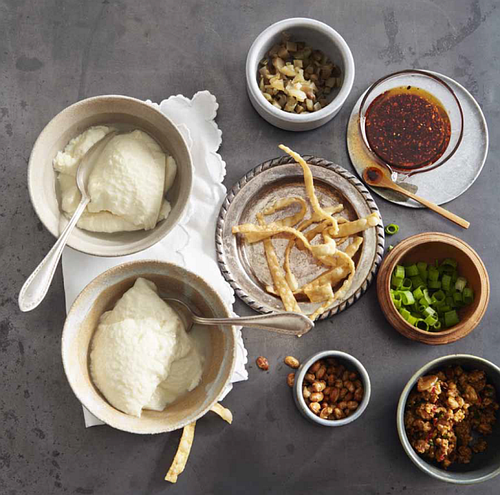
I most often eat zha cai atop of tofu pudding as a savory
version of Sichuan dou hua. I’ve used it with dan dan noodles instead of zha
cai. For a fast lunch, I eat zha cai with rice and a fried egg. It’s nice atop
a bowl if instant noodle soup too.
Chinese zha cai reminds me of Vietnamese cu cai dam (sweet
and salty preserved radish, see Into the
Vietnamese Kitchen, page 196). The difference is that the Chinese stuff is
not made of radish and a bit softer in texture.
What do you do with
zha cai? I would love to know more about this wondrous Chinese ingredient!
More on Sichuan ingredients













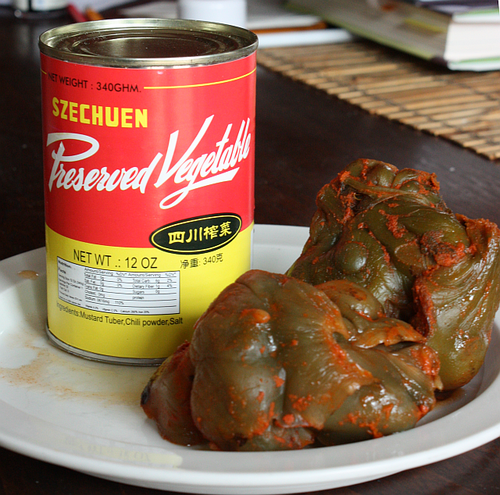
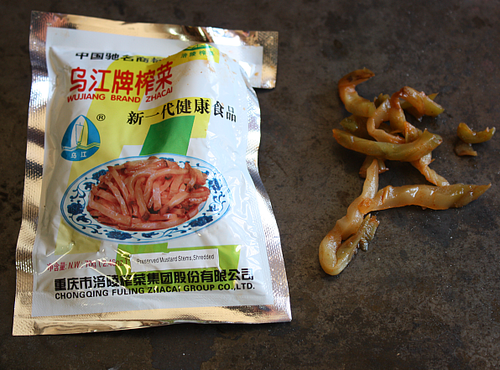

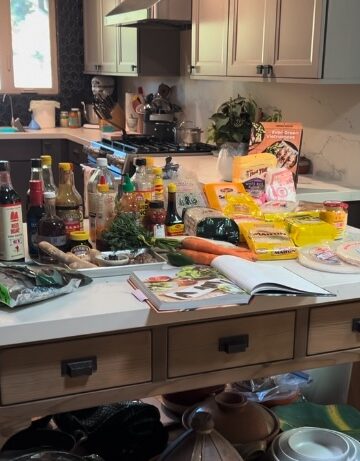
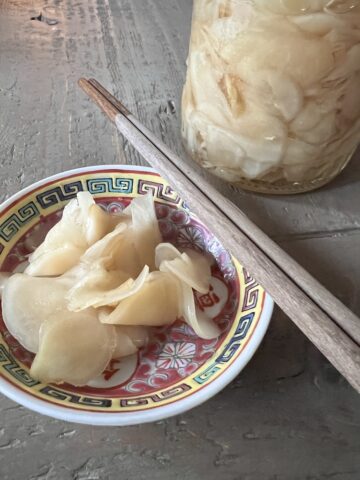
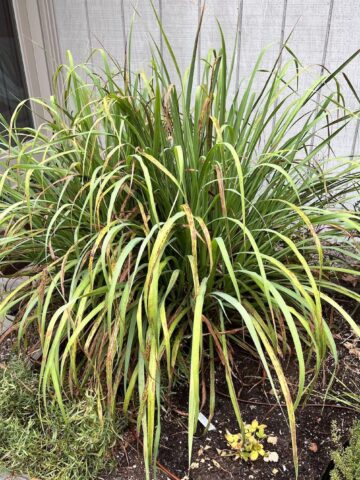
Helena says
What an idea! I've never eaten this with tofu pudding before, just plain rice porridge. I'm all game to try this, even with the other crunchy stuff I used to have with the porridge, like grilled mackerel and roasted peanuts. Now to find this tuber in the middle of Sweden... Hmmm... Well, I'd get back to you when I get back to you, Andrea! 🙂
Suzette says
I second the congee!
Andrea Nguyen says
Helena -- there has to be something kind of similar in Sweden. An intensely salty radish or cucumber would work. A topping for porridge, YES!
Andrea Nguyen says
I third the congee.
Tami says
My grandma used to serve this all the time with her morning congee - this brings back great memories. 🙂
Amy says
I couldn't find Ya Cai anywhere in San Francisco! I finally bought a bunch of packets when I was in Richmond BC last month. I did buy some Zha Cai too which I found in little packets in Chinatown. Will probably use it in a stir fry.
Andrea Nguyen says
LOVE that you brought it back across the border from BC! My kind of cook.
Andrea Nguyen says
It's an old-timey ingredient, huh? That's nice, Tami.
Tami says
We saw it in her Shanghainese cooking all the time. It's great to see this ingredient getting more attention.
Gail says
It's an essential ingredient in my favorite recipe for Szechuan dry fried long beans, finely chopped with spring onion and dried shrimp.
Doug says
I read your post just before going out to see if I could find ya cai. We have three good Asian shops here in Bloomington IN. One is predominantly Korean, so I skipped it in favor of the place that has the widest selection. I had to squat with my creaky knees in order to see the packages on the bottom shelf, and to my surprise, one of the first things I found was zha cai, the very packet in the picture. But no ya cai. Whole mustard tuber, radish, cabbage combinations. I decided I'd have to make do with zha cai, and maybe have to show the owner the ya cai picture I'd loaded on my phone. But wandering through the aisles, three rows away from the pickled vegetable packages, all by itself -- eureka! a box of ya cai! The same brand as yours, at $.99. How such little moments can bring so much joy...
diprey says
Zha cai is wonderful. You can buy them either spicy (with red hot pepper) or not spicy. Frankly, I don't quite like the canned variety in the picture, and I generally prefer to buy them from a vat in a Chinese supermarket. The spicy one goes into the morning jook or get mixed into stir-fries. A non-spicy one is added to the chilled tofu. I use them in Western dishes as well, as a substitute for (crunchy) cucumbers, fresh or pickled: for example, in the Russian salad.
Leo Redgrave says
I just found ya cai at my local grocer and I asked if zha cai was the same stuff. The shopkeeper said "no, it's more for congee". "Ya cai is more for noodles, like dan-dan." I highly recommend getting to know your shopkeeper at your local Asian food grocer, they can help you along your food journey!
Andrea Nguyen says
Most definitely! Make friends at any food market. They know their inventory.
Amory says
My mom would use it in a simple Chinese dish. She'd buy the shredded kind in a can and put it on top of ground pork with some black pepper and steam it and serve it over rice.
Rachel Foo says
Hi, I recently learnt about yacai, and I've been trying to find out if it must first be cooked, or can I add it direct to my porridge as a topping? Thank you!
Andrea Nguyen says
I'd just add it without cooking it. If you're concerned, I guess you can zap it in the microwave?